Ganggyeong-eup was an important colonial river port during the Japanese occupation. As industrialization swept the peninsula in the 1960s and 1970s, Ganggyeong was left behind. As its neighbor, Gunsan, developed in the 1980s and 1990s, changes to the waterway also contributed to the port’s disappearance. The result is a well preserved early modern Korean town that retains so much more of its authenticity than the rest of the country’s urban centers. Indeed, parts of Ganggyeong seem to still be stuck in the 1930s and 1940s. After being forgotten for decades, recent revitalization efforts have slowly been turning this tiny river town into an historic tourism site. In the same way that Jemulpo, Gunsan, and Guryongpo have all promoted their colonial remains to tourists as culture or history spaces, Ganggyeong-eup is currently in the middle of such a revitalization. I visited the town in February of 2015, a time when everything was still pretty run-down. By summer of 2016, the place will look drastically different.
Ganggyeong sits on a waterway somewhat northerly between Gunsan, Nonsan, and Iksan. It is a fertile area surrounded by rice fields, and while the town no longer operates as a major market center as it did in its colonial days, it is still renowned for its salted fish. Japanese influence can be credited with the modernization of the river port, but it is important to note that even before the Japanese arrived, Ganggyeong was already being called one of the top three market places in Joseon during the 1870s (the other two being Pyongyang and Daegu. Note that this seems to be a reoccurring theme in modern research regarding any old Joseon market, where a writer will claim something to the effect of, “It was said this market rivaled Daegu’s and Pyongyang’s”).1 Furthermore, the town was a Joseon “military base for the transport and taxation of supplies from the southwestern Korean region to Hanyang (currently, Seoul)”.2
As such, it may have been the kind of place that could have allowed for the development of capitalism independent of Japanese influence had it ever been given the time to do so. However, Ganggyeong’s position on the peninsula was too attractive to be ignored by the new settlers because it could serve the immediate region with goods transported to and from Gunsan. The running of the Honam Line through Ganggyeong in 1905 made the town an even more important commercial center that was vitally linked to its neighbors.
At its biggest point, there may have been some 30,000 people living here,3 but I want to know where all the research papers on this town are. Academics have produced essays on almost every other former colonial city, but I have yet to find anything specific regarding Ganggyeong’s demographics and population. The town’s old Japanese censuses and newspapers are surely locked away in some archive, we just need someone to make this information public. Then again, I might just not be looking in the right place.
We do know that it was in the early 1900s that Japanese settlers first began setting up shops and financial institutions here.4 Hanho Nonggong Bank (now known as the former Hanil Bank) established its Ganggyeong branch in 1905, becoming representative of the wealth and development of the river port at that time. In the 1920s, Ganggyeong received power via the construction of a hydroelectric plant nearby and got a movie theater that same year.5 Judging by the remaining buildings, we can see a number of them date to the 1920s, perhaps indicating that this is when the town really began to take off. It continued to grow until liberation in 1945, at which point the town lost its status as an important river port town. All the Japanese capital that was supporting Ganggyeong’s modernization disappeared as the port’s foreign population went home. The fact that the town could no longer trade with Japan surely played a huge role in its demise as well.
Regarding the history of its administrative divisions, Ganggyeong was first under Eunjin-hyeon during the Joseon era, hyeon being a pre-Gabo Reform division that was smaller than a county or city. In 1912 it fell under Eunjin-gun (county) before being absorbed by Nonsan-gun (county) in 1914. The next year, in 1915, Iksan-gun (county) became Ganggyeong’s new administrative overseer. As Ganggyeong grew, it was finally elevated to a town (Ganggyeong-eup) on April 1, 1931. Interestingly, Ganggyeong is actually split into “village” divisions, or ri, rather than “neighborhood” (dong) divisions. This is strange when you consider that Ganggyeong proper isn’t much larger than one square kilometer. It is also kind of funny that this arrangement still exists today. Judging by present day maps and the incorporation of most of these “villages” in 1914,6 this is what I think happened: At that time, there were a series of small hamlets spread out over that one square kilometer of land. As the port developed, these hamlets did too, growing closer to each other and continually getting reintegrated under various counties until finally falling under Ganggyeong-eup’s jurisdiction in 1931.7 When you factor in the time it took people to travel anywhere a hundred years ago, it perhaps made sense within the context of the early 1900s. That being said, I think I was able to walk from one side of the town to the other in about an hour . . .
Reminiscing about his life in the old river port, a former electrical engineer named Yang Seong-deok said:
“My grandfather was a rice dealer, and in those days all the rice harvest was brought to this seaport and then shipped to Japan. Because of the town’s importance, many, many Japanese lived there.”8
Yang then talks about his shenanigans in Ganggyeong as a young boy. He pranked Japanese residents and discusses how he showed his patriotism. Though this account is only one tiny part of the larger Ganggyeong narrative, stories like this give us a small glimpse into what life may have been like for some people at the time.
“I remember that when I was in fourth or fifth grade (1929-1930) the Japanese forbade Koreans to wear their traditional white clothing, but they couldn’t enforce the ban. Those Japanese set up huge tubs of water – dirty, dark water – at street corners everywhere. Whenever they saw people in white clothes passing by, they sprayed them with this dark water.
We kids sometimes played practical jokes on our Japanese neighbors. We crept out in the middle of night and dug holes outside their houses’ front entrance. We filled the holes with night soil [human excrement] from the outhouse and then covered it up with clean soil. The next morning they stepped in it!
Sometimes we threw chicken droppings onto their laundry hung out to dry. That wasn’t so bad. We did these things when we were in primary school. As I look back now, they certainly weren’t good things to do, but we were boys and we egged each other on.
As I grew older, I found more acceptable ways to voice resistance. One thing we used was music. I first heard the song “Pongseonhwa” when I was in technical high school. It speaks of a flower springing up to new life. The Japanese knew we sang it as an independence song, and later, after we all learned it, they banned it.”9
Hwangsan-ri
Rather than beginning inland, I’d like to start this photoessay at the riverfront. The Geum River (Geumgang) no longer carries ships because it was closed off when the Geumgang Estuary Bank was constructed in 1990 in Gunsan as part of a land reclamation initiative. There seem to be environmental concerns surrounding its construction, too. In its colonial days, Ganggyeong had a lot of naval traffic. During the spring peak season, it was said that a hundred ships would go in and out of the port in a day.10
Nothing remains of the actual port facilities today, but you can still walk down to the old floodgate and stand in the general vicinity of the former harbor. Ganggyeong’s concrete floodgate was constructed in 1924, an impressive engineering feat showing the value of this port. It allowed for boats to load and unload goods without affecting the tides, but it also helped reduce flood damage by controlling the water level. Not all of the original structure remains as it seems that one gate might be missing, but much of it appears to be authentic. A small pedestrian bridge on the inland side of the gates still has old text engraved in the concrete. About seven years after the floodgate’s construction, the embankments along Ganggyeong Stream and Nonsan Stream were altered in some way between 1931-1933.11 Here are some photos of Ganggyeong Floodgate.
Bukok-ri
Moving on a little bit north into Bukok-ri, we can find the old Ganggyeong Bukokri Methodist Church. Built sometime around 1920 by Methodists, it is a lovely mixture of brick and wood architecture done in an (untraditional) hanok style.12 Though I didn’t get photos of the interior, this chapel has a nice raised ceiling in the center whose exposed beams offer some relief to an otherwise simple structure that is almost built in a perfect square. If you look at the exterior, you can see that there is not one central entrance, but rather two separate doors on either side of the front facade. The chapel was built this way because, in accordance with Confucian values, sexes should be segregated.13 Bukokri Methodist Church’s original giwa roof, dating to 1923, was replaced with a metal one at some point before finally being restored with newer tiles when it became a designated cultural heritage site.14 One Jeong Dal-seong (정달성) seems to be credited with its establishment after he came here in 1918, but this building is particularly noteworthy for Methodists because it appears to have been the first one built in the area.15
A run down baptist church sits at Oknyeobong Park on top of the hill. It was built in 1924 under a minister named E. C. Pauling who was sent here in 1896.16 Baptists and Methodists were both noted for having refused to participate in Japanese shrine affairs during the colonial period.17 The building has since fallen into disrepair, but it seems like there are plans to have it restored by 2019. The church is unpictured here on this blog, but I’ve included on the map at the end of this blog post.
There are a few more early modern hanoks and Japanese buildings near this church, like the building with the black tiled roof pictured below. A couple of crumbling wooden structures can be seen as well as we head back towards Geumbaek-ro. There is also a nice Western-Japanese style house in Oknyeobong Park (unpictured) that I missed during my trip but have marked it on the map at the end of this blog post.
Gyebaek-ro 219beon-gil (계백로219번길)
On this road are few minor Japanese styled buildings. One of them still retains all of its metal canopy supports. The two story red structure may have been a hospital, according to Robert Koehler’s Flickr page. The concrete building next to it also appears to date to the early modern period. Down an alley off this road, a Japanese house has all but collapsed, but it’s still hanging in there. Because it has remained largely untouched, we can see the original roof tiles, clay walls, wooden exterior, and window frames. It might have been a nice house in its heyday. Another early modern building with an exposed wall can be seen as well. There is one more concrete Japanese building on this road at the intersection near the present day Ganggyeong Methodist Church. Its first floor has been altered but the second floor facade still retains two decorative sign frames, indicating that this was a former store front.
If you turn at this intersection, you can easily see the old Namildang Chinese Medicine Shop (남일당 한약방). The name could also be translated as something like “Traditional Herbal Medicine Shop,” but hanyak literally refers to Chinese medicine. Built in 1923, it is a two story, wooden building with a hipped roof and still retains its decorative iron bracket supports under the first floor roof. From the rear we can see that the building is actually in an “L” shape, but it almost looks like two separate buildings that were joined together.
The old medicine shop has a few interesting neighbors. On the same street as the front facade, there are a couple of warehouses and a building (pictured below) that might have originally had a second floor. A wide hanok with a new roof sits behind the medicine shop, too.
Ongnyebong-ro
This is another fantastic road to take a walk down because a number of the old Japanese stores here still have text on them. Though most of the buildings have had their Japanese text defaced or totally removed, like the first store pictured below, a few of them appear to have had their old signs restored. Whether or not these are authentic is unclear, and without more information it is difficult to tell. This building (pictured below) has actually already gotten a makeover judging by this article showcasing Ganggyeong’s restoration progress. In this article, we can see that the text on the facade was restored, the first floor post-war extension demolished, and the walls uniformly painted in gray. I’ll let you decide whether it adds to or takes away from its authenticity. Personally, I have mixed feelings if this is what all of Ganggyeong’s minor historic buildings are going to look like.
Next to this formerly defaced storefront is a picturesque, rectangular store. Painted with a blue accent, it features an interesting half-octagon-like extension at the street corner. The first floor has been changed, but you can tell it would’ve been a striking Western influenced building at the time. Though I can’t find any evidence of this, it may have been a telephone office during the colonial period, according to Robert Koehler’s Flickr page. This, too, is currently being restored according to Ganggyeong’s revitalization plans.
There is a small Japanese store next to it with a sign that indicates it housed the Daedong Electric Company (literally translated as Daedong Electrical Shop in English, 대동전기상회 in Korean).18 There are a few more Japanese stores at the end of this street, one with a circular window and another missing its original sign.
Here are two structures that merit some discussion. The first is a typical square, two story store or office, but this one still retains an old logo on its facade. On close examination, it almost looks like an artistic rendering of 옴 (Om) in Korean. The next building, according to its signs, was a clothing store. The left sign reads Singwang Shoe Store (신광양화점) while the right sign could be translated as either Hwasin Tailor or Hwasin Suit Store (화신양복점).19 This building’s signs are also the ones that look the most obviously new, perhaps calling into question their authenticity. This old clothing store is also slated for restoration according to the town’s revitalization plans.
At a nearby intersection, there is a three story colonial building that may have been a department store, according to Robert Koehler’s Flickr page. If this was the case, it again shows just how wealthy the town was becoming by the end of the Japanese occupation. With rail and sea connections to every important urban center on the peninsula, Ganggyeong surely had the logistical means to support such a business.
There are two more intersections that deserve mentioning. First, an old building being used by Ganggyeong Jungang Church. It is a large, two story brick structure with stone embellishments, including a circular design above the former entrance. The old entrance is now blocked by a newer add-on with a garage door, but you can clearly see the original porch area just peeking up above the new section. The brick looks to be the same as early modern or post-liberation brick, but was laid in a rather simple fashion. The building did get some relief at the corners, which are slightly angled. Just down from this brick building is another generic concrete Japanese building. It also sat near a larger Japanese concrete store that I believe has been demolished now (unpictured), but I have included the location of it on the map.
Jungang-ri
As we get back to the main Gyebaek-ro, here we can see the old gymnasium of Ganggyeong Jungang Elementary School. This gymnasium was completed on June 30, 1937. It is a large, handsome brick structure with decorative elements at the corners that might be molded concrete.
Behind the school are a number of old wooden-clay buildings (pictured below). To me, the most curious building is a former temple. At a glance, it just looks like a hanok styled structure painted in generic temple colors with a newer, geometric facade. Indeed, the walls use clay and However, if you look at the roof, you can see that it is gabled in a Western style. The support beams stick out at the end and they were clearly not cut like a hanok’s beams. So what was this used for in the past? I’ve noticed on several occasions that buildings will get recycled according to their prior use, so was this another temple before? Was it a church? Was it a Japanese shrine? I’m reaching now, but I’m curious. Next to this former temple are a few more crumbling early modern structures and a couple of hanoks. A dilapidated hanok at a nearby intersection shows what happens when you don’t take care of these kinds of buildings.
At an intersection near Ganggyeong Commercial High School we can see one more interesting minor building that features two gabled roof sections that are connected with each other.
More importantly, on the actual campus of this high school, is the old schoolmaster’s house. It is formally called the Former Official Residence of the Principal of Ganggyeong Commercial School. Built in December of 1931, the info plaque says it was originally a Japanese styled wooden building that was renovated with red brick. Presumably the stone porch was also added at the time of the renovation. Either way, these changes had to have taken place within the colonial period. The brick is simply too old to have been a post-Korean War change. Whatever it originally looked like, the final structure is a uniquely beautiful one due to its incredible roof. It combines dramatic, swooping hanok roof lines with steep, pointy Japanese roof lines. Indeed, the views of the exterior of each side of the house are all very different as the roof structure itself creates varying visual effects. For this reason, it is aesthetically one of my favorite colonial houses in Korea. The interior, which I coudn’t get access to, is said to have a corridor that loops around the house in a maze-like fashion according to the “Japanese sense of spatial composition.” Kudos to the architect, whoever s/he was, for creating such a visually interesting house.
I’d also recommend visiting Ganggyeong Cathedral, a mid-century modern 1961 church with an interesting interior. The exterior isn’t too bad either, albeit rather simple (unpictured). I’ve marked it on the map at the end of this blog post.
Seochang-ri
If we loop back north, we can visit the previously mentioned former Hanho Nonggong Bank. It was built in 1905 with 500,000 hwan in capital stocks, hwan being a Chinese influenced currency that was used between 1892 and 1902, but also reintroduced after the Korean War for a time.20 During annexation in 1910, the bank was renamed as Joseon Industrial Bank. After liberation, it became the Ganggyeong Branch of Hanil Bank and Chungchong Bank. Today it is generally referred to as the former Hanil Bank. It is a large, red brick structure with decorative faux columns along the front facade. Its entrance is noted for being disproportionately small when compared to the rest of the building. The roof had to be restored at some point after being bombed during the Korean War. Remaining red brick walls around the bank seem to be what’s left of a warehouse and employee residence that used to be here. The interior of the bank has been turned into a museum with various artifacts and photos from Ganggyeong’s last one hundred years. The original vault and safe are still intact. Interestingly, the vault door is labeled “Tokyo, Japan” then “Takeuohiro,” a company I have never seen printed on any other colonial safes/vaults left in Korea. Most of the safes I’ve seen have “Tokyo, Japan – Asahi” on them.
It also bears mentioning that there may be a former Hanil Bank employees’ residence somewhere in the Bukok-ri area (the area with the previously mentioned Methodist hanok church). The only evidence I have for this is a picture of a sign by the Modern History Gallery on someone’s blog (it’s labeled as 구 한일은행지정장 시택 – 강경읍 북옥리). The sign shows an image of the building, but I have yet to find any other information about it. Street views of the area on Naver and Daum maps have also proven to be useless in locating it.
Yeomcheon-ri
About a block from the former Hanil Bank lies the old Ganggyeong Labor Union building. Built in 1925, it was originally a two story building that, like the Namildang Chinese Medicine, would have actually been pretty generic at the time. Perhaps like the old medicine shop, it has probably been preserved because folks have identified the building and its history easily. Apparently labor unions of the early modern and post-Korean War era were known to be rather powerful. The labor union here probably had a strong influence on the transportation of goods to and from the port town. Ganggyeong Labor Union became the Ganggyeong Branch Federation under the Nationwide Wharf Union in 1953. This change reflected the way in which Ganggyeong’s labor union was divided up by industry, creating several sub-unions under its new name (Ganggyeong Branch Federation).
At a glance, this might just look like an old hanok to the untrained eye, but it is quite different. All the timber has been evenly cut. Old second floor beams can be seen just showing under the eaves of the present roof, which is, of course, new. Iron brackets were attached to the facade at each load-bearing beam. Furthermore, the bay windows, which uniformly follow around the entire structure, are anything but traditionally Korean. The gabled porch also reflects the Japanese influence of the time. In the past, office space was on the first floor while the second floor only consisted of two rooms. The building was renovated for use as a one story office at the time of its name change in 1953.
Hwangsan-ri
In this part of town, there is an old building that was Ganggyeong’s Chinese school. It is currently kind of tricky to locate because of how buildings have blocked it in on all sides. The teachers’ residence (unpictured) also sits right next to it. The school was built in 1925 and still retains its old text on the facade.21
While you’re at it, go ahead and visit the old Unification Church, which is identical to the one in Tongyeong, and a lovely, walled-in, elevated Western-Japanese house at 충청남도 논산시 강경읍 황산2길 13 that has been preserved really well (unpictured). These were buildings I wasn’t aware of during my first visit and therefore don’t have any pictures of them. However, I’ve marked them on the map at the end of this blog post.
Daeheung-ro 5beon-gil (대흥로5번길)
Paralleling the main Gyebaek-ro about two blocks south is this road, Daeheung-ro 5beon-gil. The first noteworthy site has a pair of massive wooden warehouse from the colonial period. The only other place I’ve seen any like this intact is Miryang – but even Miryang’s were covered in newer cement and featured added wall supports. This one, as of February, was in pretty good shape. Though, you can see from the photos that the wood planks are warped and coming off in some places, exposing the old clay insulation, it looks like the frame is still holding its general shape well. I was able to get one bad, dimly lit photo of the interior. Fortunately, since this pair of buildings is presently getting featured on tourism board signs, it doesn’t look like they will get torn down.
This street also has two Japanese houses, one of which I find to be in excellent condition considering it has been lived in for so long. The first has some pretty high privacy walls, making it hard to see the structure well, but I was able to get a photo of the gabled entrance with its original iron bracket supports. The well-preserved house still has most of its original black ceramic tiles.
Chaesan-ri
South of the railroad tracks and up a small hill on Ganggyeong-ro 66beon-gil, we can find the town’s old waterworks and reservoir. It is remarkably well maintained and surprisingly large when compared to the remains of other old water facilities in larger cities like Daegu or Busan (though not as decorative as Daegu’s). Like other colonial reservoir remains across the peninsula, this one is on top of a hill. As you first arrive at the waterworks, there is a new house on the left that is currently occupied. Because of its location, I got the impression that the caretaker lived here and monitored the site. Either way, the gate was open and I walked in. The first old building is a simple square, concrete block with red bricks on its facade. It has a rounded concrete porch overhang as well. (Sorry about the blurry photo. I didn’t realize there was rain on the lens in this shot)
It looks like there are three main underground tanks (though one article says there are four), two of which have elaborate decorative stone and brick access points with Chinese lettering over them like the reservoir in Busan. The red brick entrance has text that translates to “휘광생천청” in Korean, which seems to be something poetic about a spring or stream (similar to the one in Busan).22 The entrance with the green door has text that translates to “부기서상지” – a distribution reservoir.23 These were constructed from 1921 to 1923 with a capacity of 5,500 cubic meters of water.24 The grassy knolls that make up each of these roofs’ have a series of concrete tubes that I assumed were for water treatment, but they are actually just air vents.25 There is also a curious small concrete square with a low concrete fence on top of one of these knolls. In the center is a block that appears to have been broken, so what was here before? Was it machinery? Was there a Japanese memorial that was torn down after the war? Fortunately, the reservoirs were unlocked when I visited and I was able to take a couple of photos of the immediate interior.
Next to these are five open tanks that resemble swimming pools. Lastly, there is what was clearly the filtration system. It, too, is open air, but covered by a pavilion. The scrubbers, motors, and wooden tiller-like things are all intact, but this filtration system looks a little bit newer than the rest of the reservoir to my eye. If the filtration system is actually from the colonial period, then I would say it probably had some modifications after 1951.26 Ganggyeong’s old waterworks is a well preserved example of a colonial civic project that brought piped water to a modern river port when every other town was still using wells or carried stream water.
On my way out, I came across this 1960s-1970s structure near the bus stop that I thought was kind of interesting. Cheers, Merry Christmas, and Happy Near Year!
To see the entire Flickr gallery, click here.
This write up uses photos from a trip to Ganggyeong that I took back in February of 2015. You’ll have to excuse the blur in some of the pictures because it was raining off and on that day. The photos are not up to date, but given that the town is now trying to promote its colonial history, I doubt any of the buildings pictured here have been demolished. I really wanted to write this post as a before-and-after article, but I just don’t have the time to revisit the town right now and see the major face lifts some of these old buildings are getting. If you see any wrong information, or if you know that the status of any of these buildings has changed, please comment below or send me a message. Special thanks to my friend Bo-ram for translating the Japanese, Kanji, and Chinese texts on some of these buildings.
Footnotes
1강경읍, 위키백과 (2015).
2Changhyo Yi and Junyoung Ryu, “Growth, decline and the challenges facing a policy-dependent and former-colonial city: Gunsan, Korea,” Cities Vol. 43 (2015), 38.
3강경읍, 나무위키, (2015).
4강경읍, 위키백과 (2015).
5강경읍, 위키백과 (2015).
6이상수, “지명유래,” 논산시강경읍 (2012).
7이상수, “강경의역사,” 논산시강경읍 (2012).
8Hildi Kang, Under the Black Umbrella: Voices from Colonial Korea, 1910-1945, Cornell University Press (Ithaca, NY: 2005), EPUB (Location 1780) in Chapter 9: Passive Resistance.
9Hildi Kang, Under the Black Umbrella: Voices from Colonial Korea, 1910-1945, Cornell University Press (Ithaca, NY: 2005), EPUB (Location 1780) in Chapter 9: Passive Resistance.
10이상수, “강경의역사,” 논산시강경읍 (2012).
11강경읍, 위키백과 (2015).
12북옥감리교회, 문화유산채널 (2014).
13고유진, “강경 북옥감리교회,” 논산시문화관광 (2015).
14북옥감리교회, 문화유산채널 (2014).
15북옥감리교회, 문화유산채널 (2014).
16“충남 강경 일대 종교 유적, ‘경제 효자’로 거듭난다,” 한국일보 (2009).
17북옥감리교회, 문화유산채널 (2014).
18Special thanks to my friend Bo-ram for translating this from Japanese/Kanji/Chinese.
19Special thanks to my friend Bo-ram for translating this from Japanese/Kanji/Chinese.
20Mark Lovmo, “The Hwan Coins of South Korea in the Era of National Transformation 대한민국 “환” ( 圜 ) 표시 주화,” Dokdo Research (2014).
21강경 화교학교 교사와 사택, 문화재청.
22Special thanks to my friend Bo-ram for translating this from Japanese/Kanji/Chinese.
23Special thanks to my friend Bo-ram for translating this from Japanese/Kanji/Chinese.
24“강경배수장(충청남도 최초 수도시설),” 놀뫼신문 (2011).
25“강경배수장(충청남도 최초 수도시설),” 놀뫼신문 (2011).
26“강경배수장(충청남도 최초 수도시설),” 놀뫼신문 (2011).
*Ganggyeong appears to have been briefly mentioned by an interesting Japanese individual named Fumiko Kaneko in her 1920s book, The Prison Memoirs of a Japanese Prisoner.
*There are a few eighteenth century Joseon hanok buildings in Ganggyeong as well that I didn’t visit.
*One more large colonial residence can be seen pictured on Robert Koehler’s Flickr page here. I couldn’t find this one, and I think he misidentified it as being a Chinese medicine shop. The only notable Chinese medicine shop in Ganggyeong is presently the previously mentioned Namildang building. Was this building in Koehler’s picture destroyed?
Building Locations

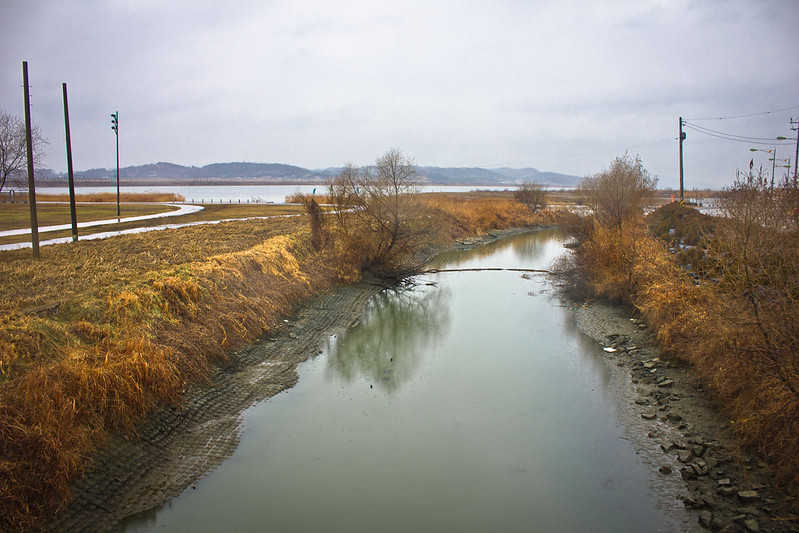
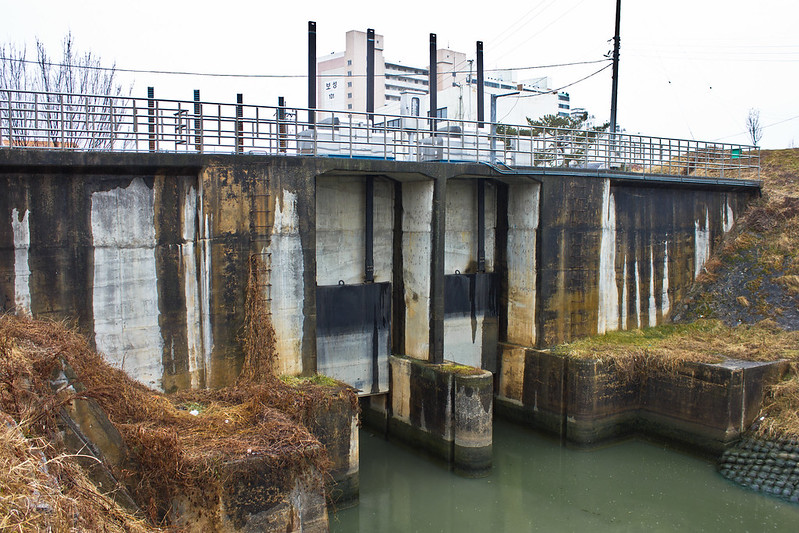
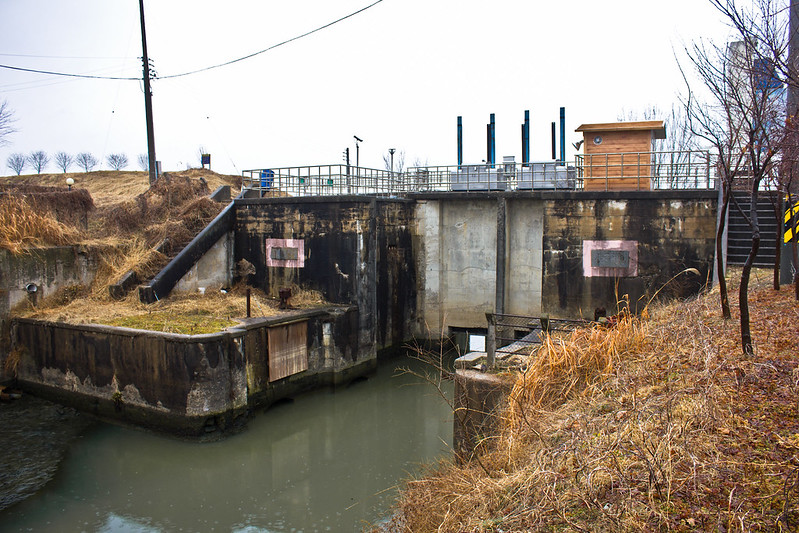
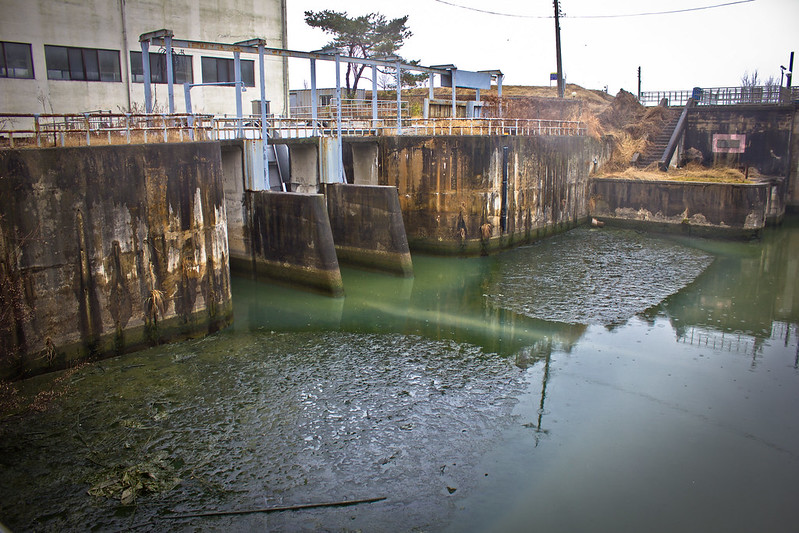
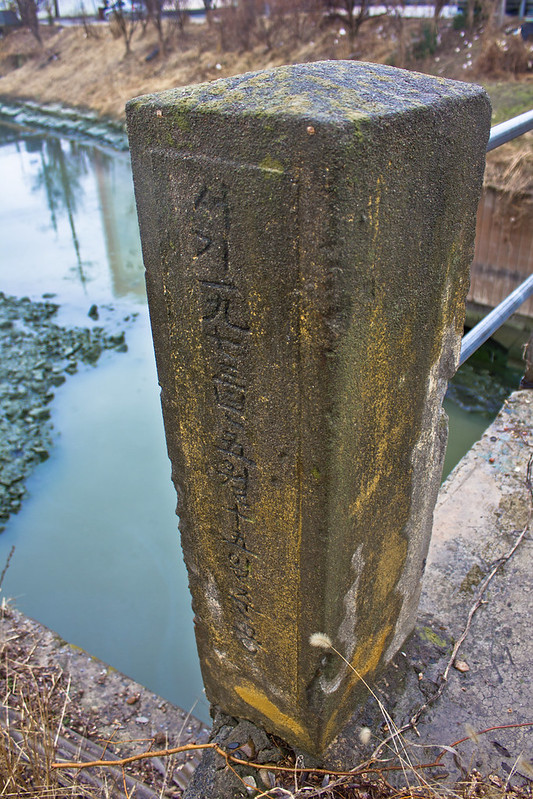





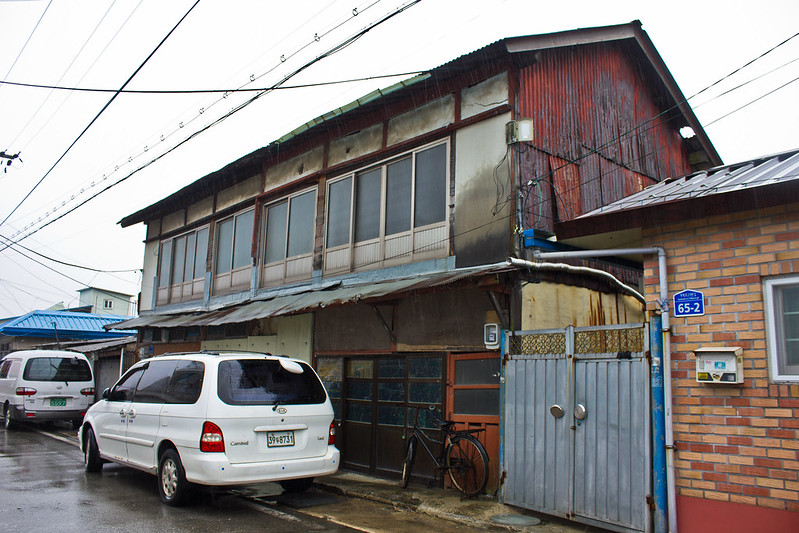

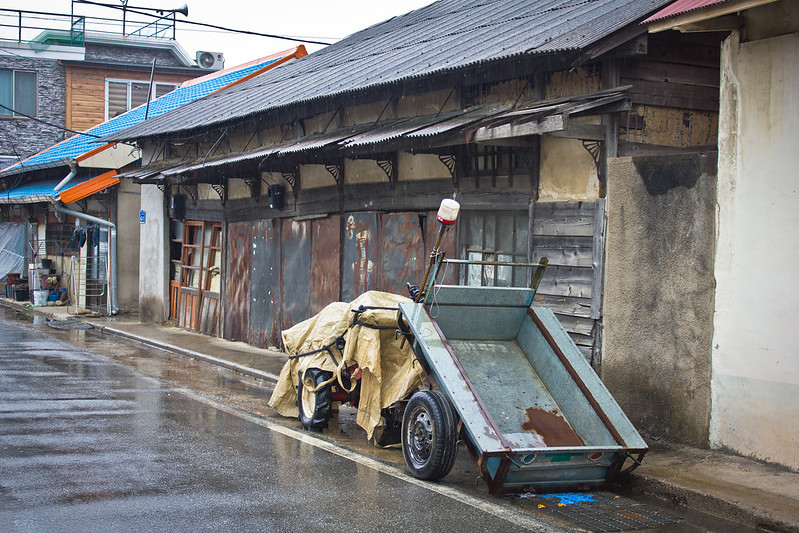
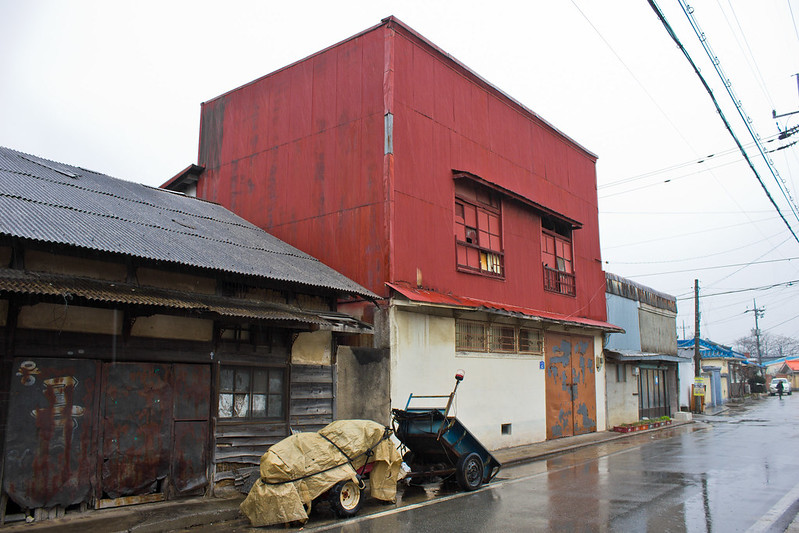




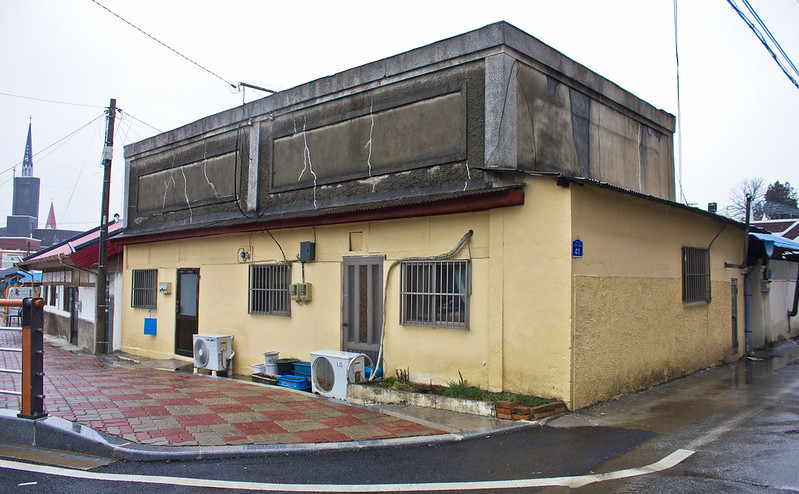
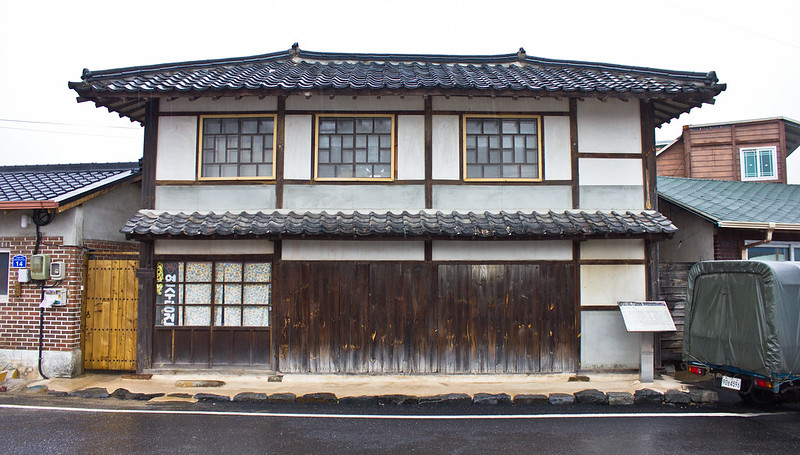
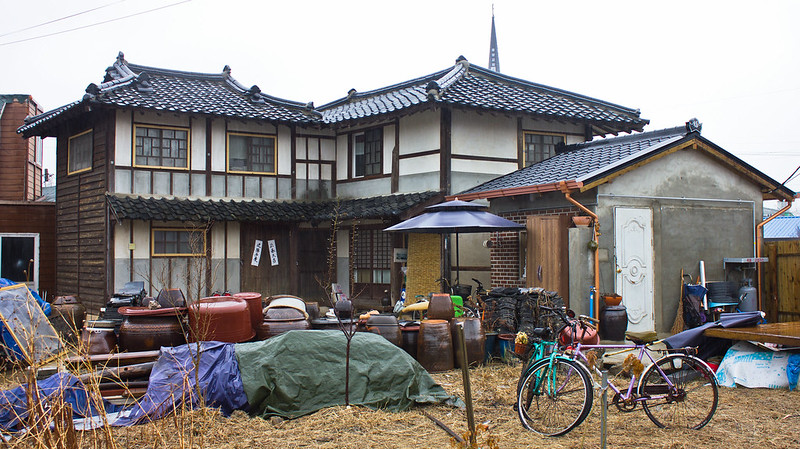



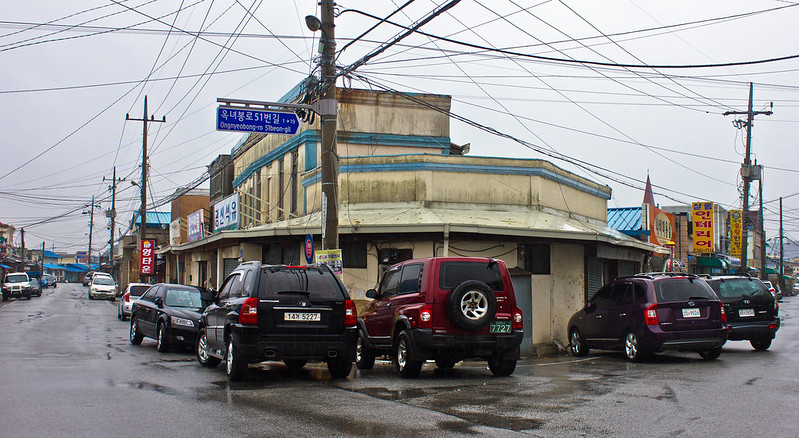
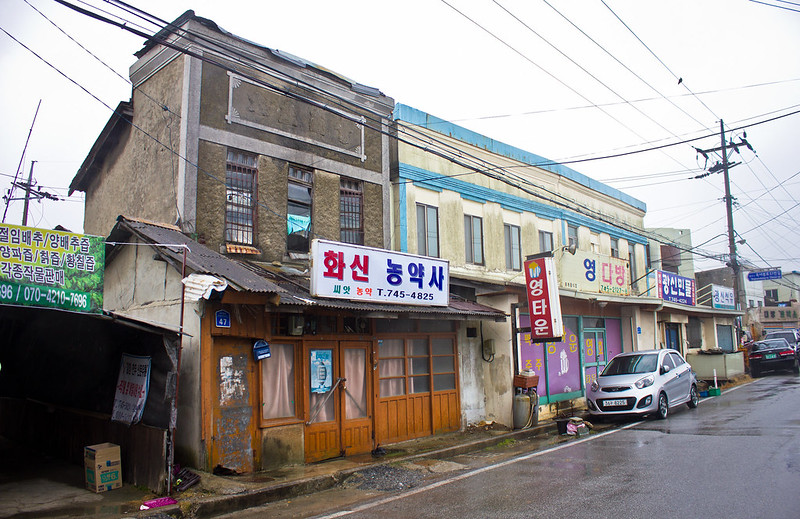

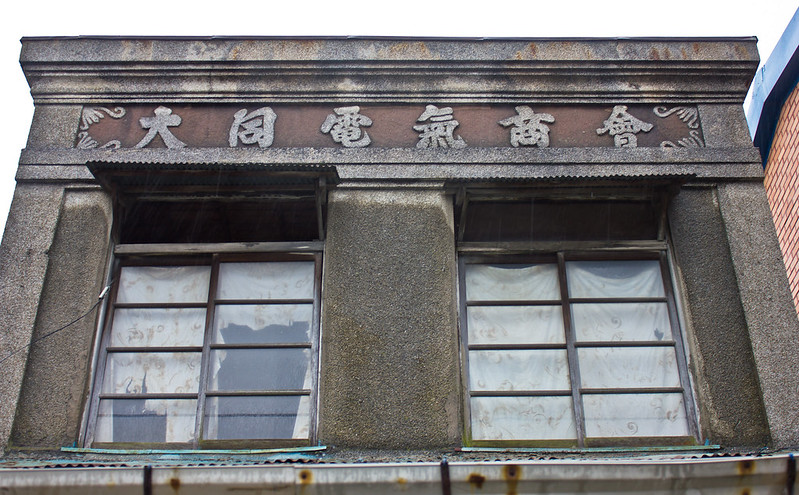

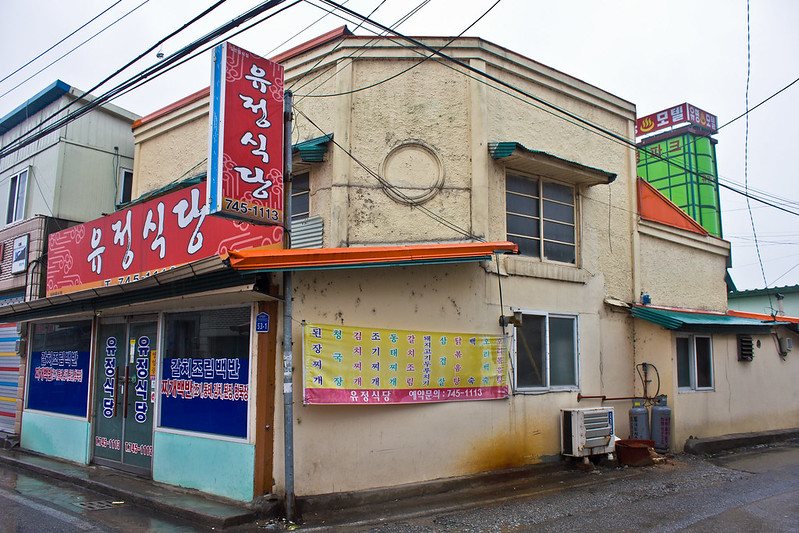





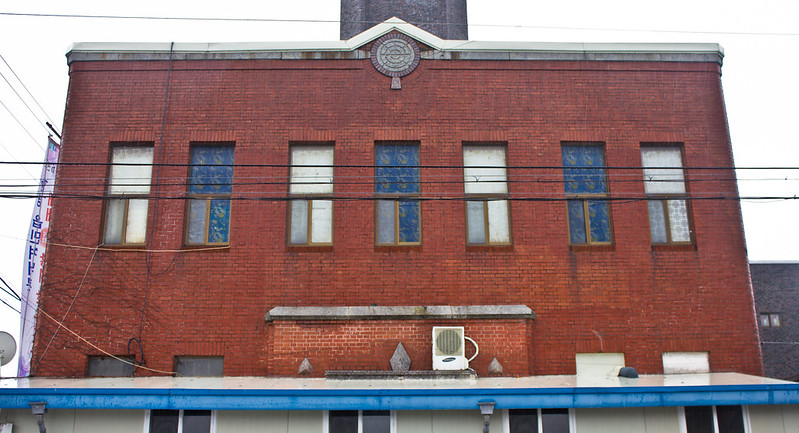
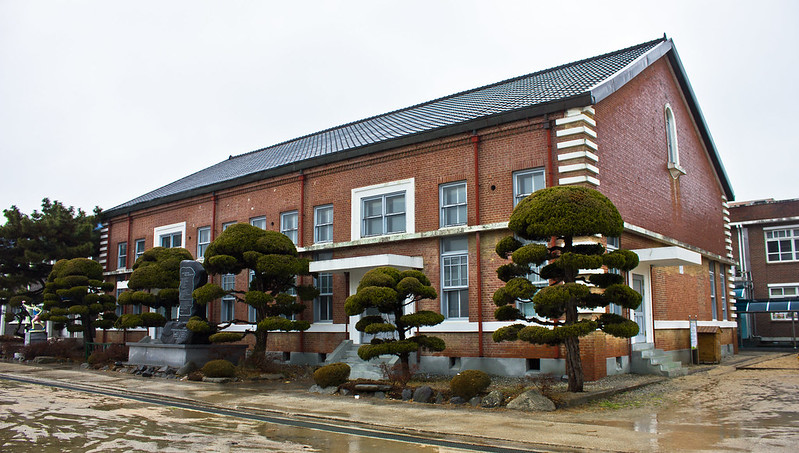
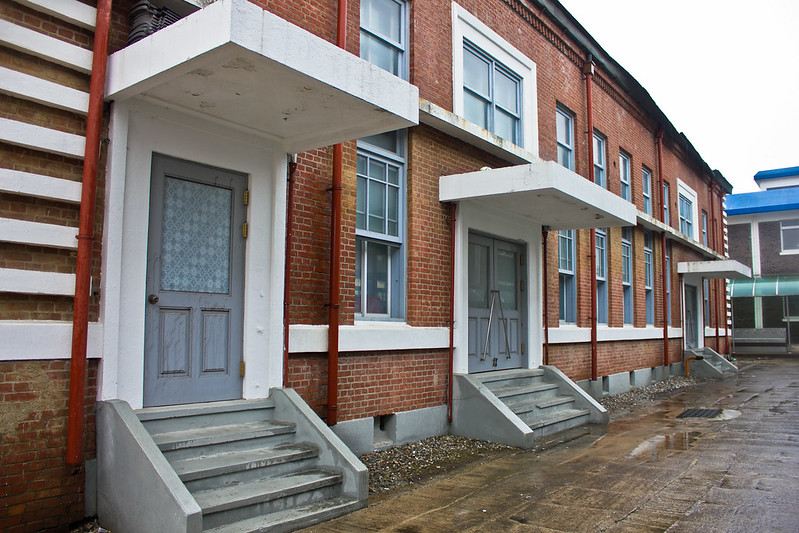
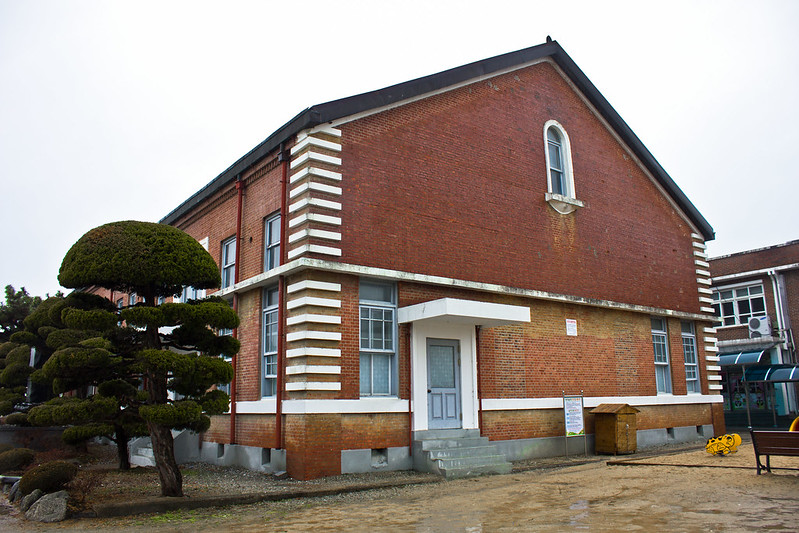






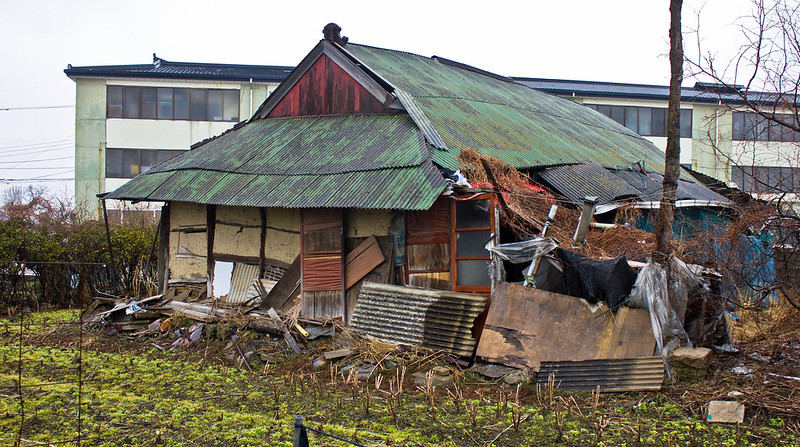
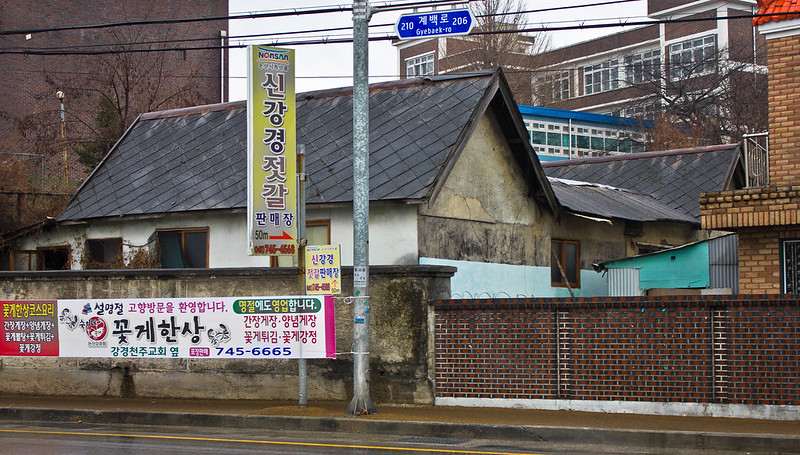
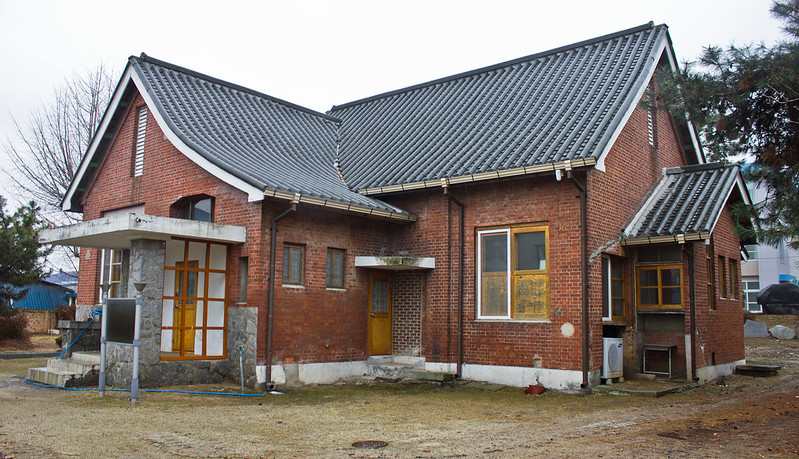
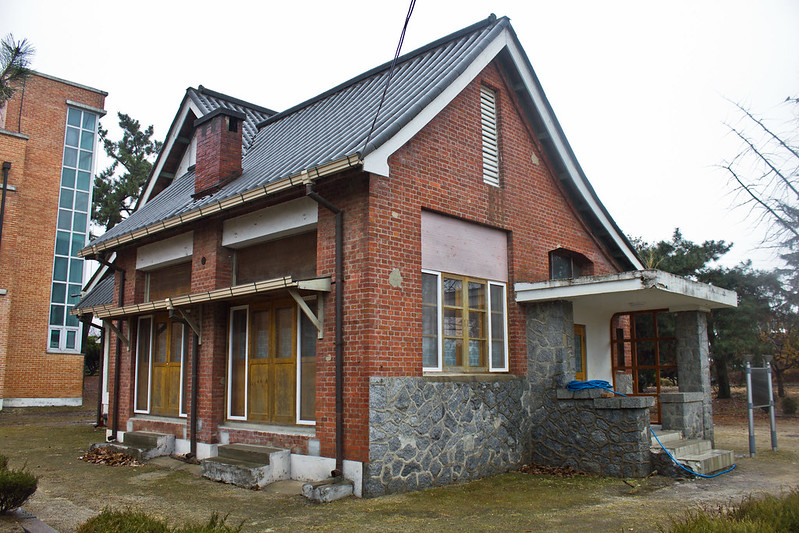
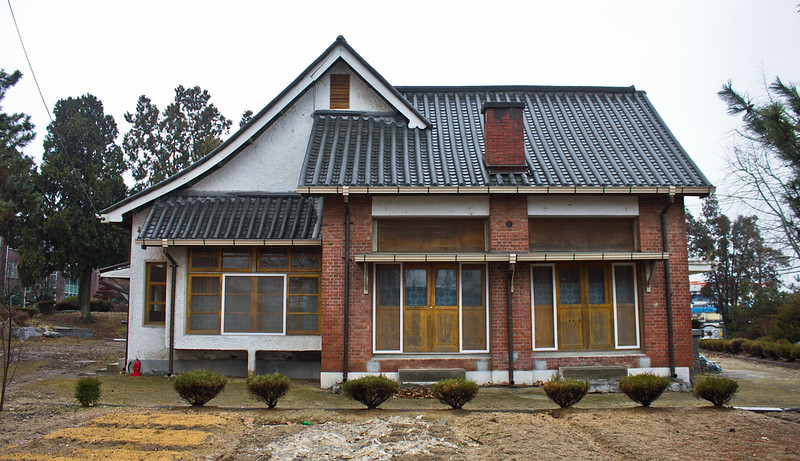
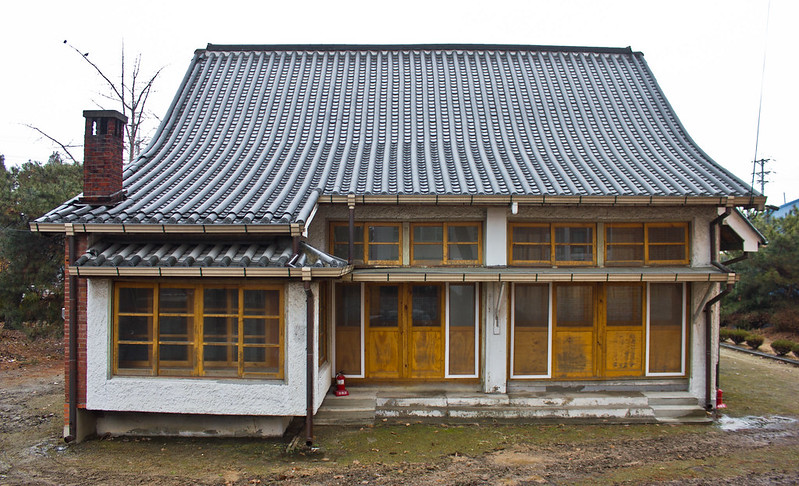




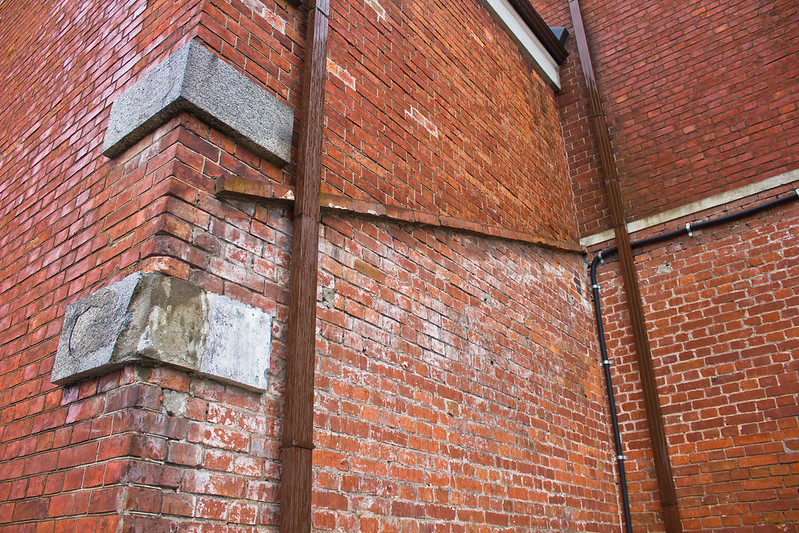



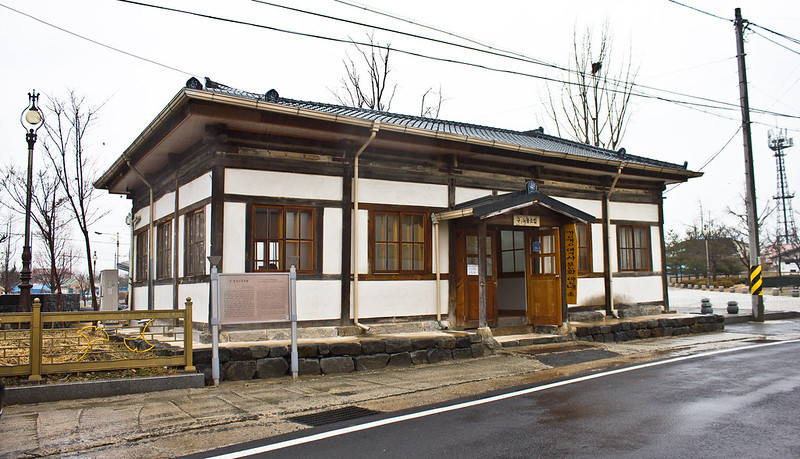


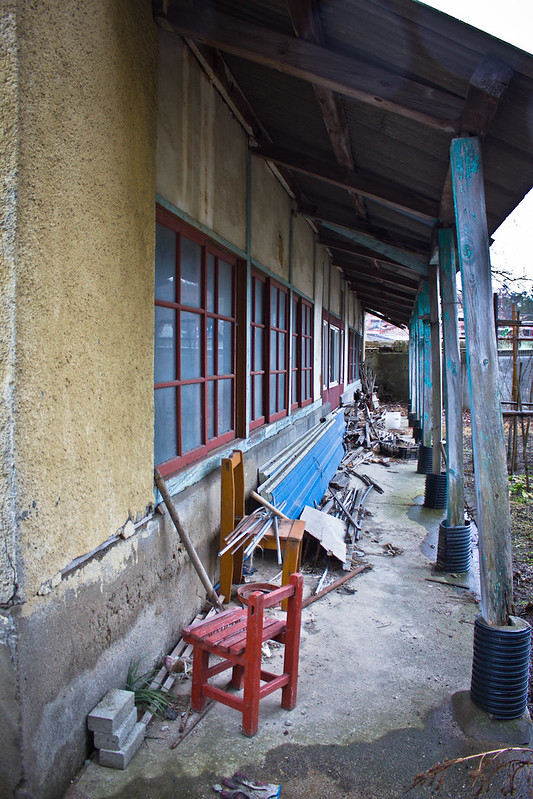
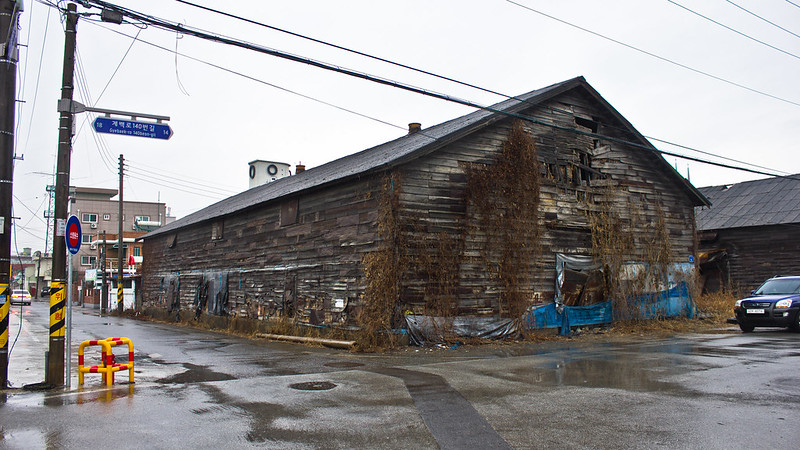
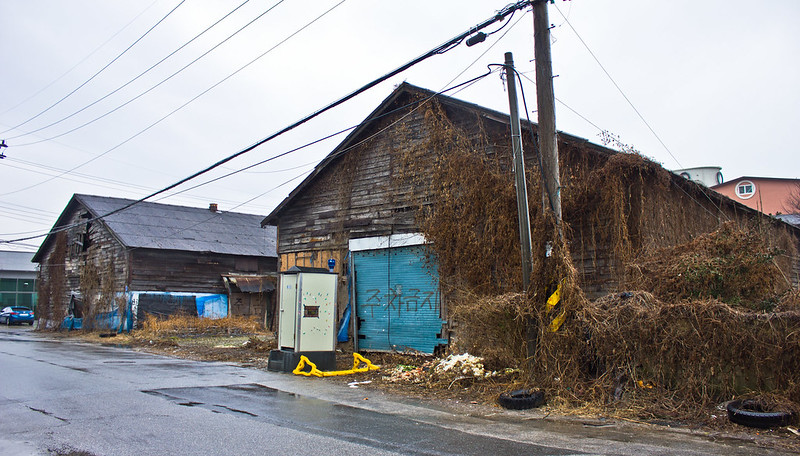
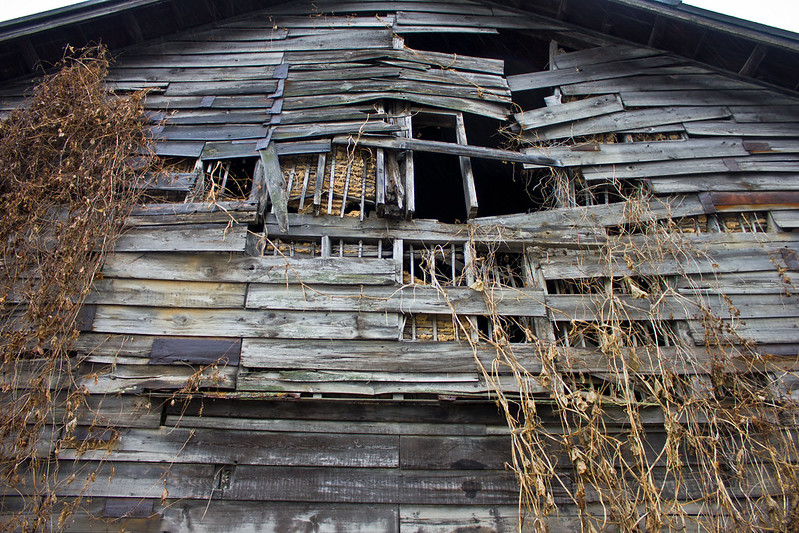
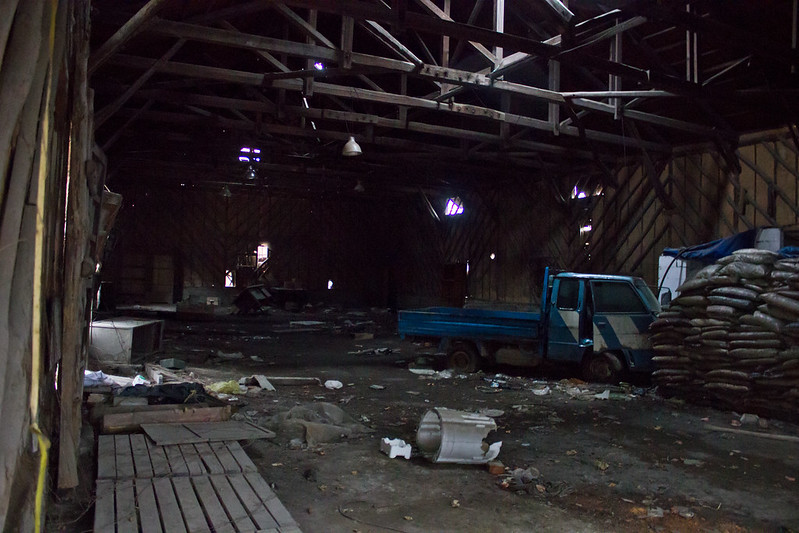


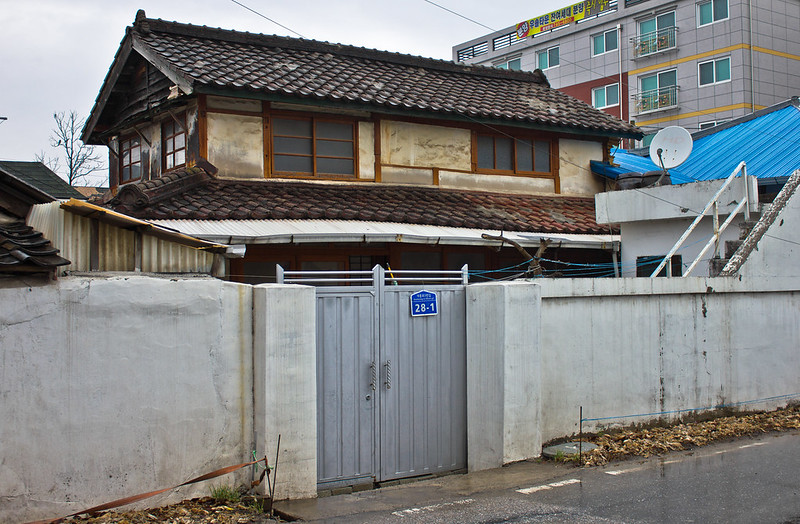
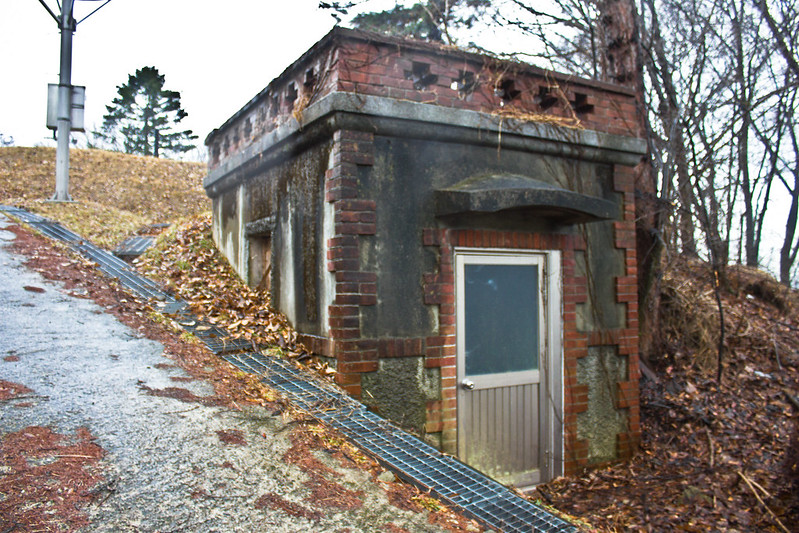

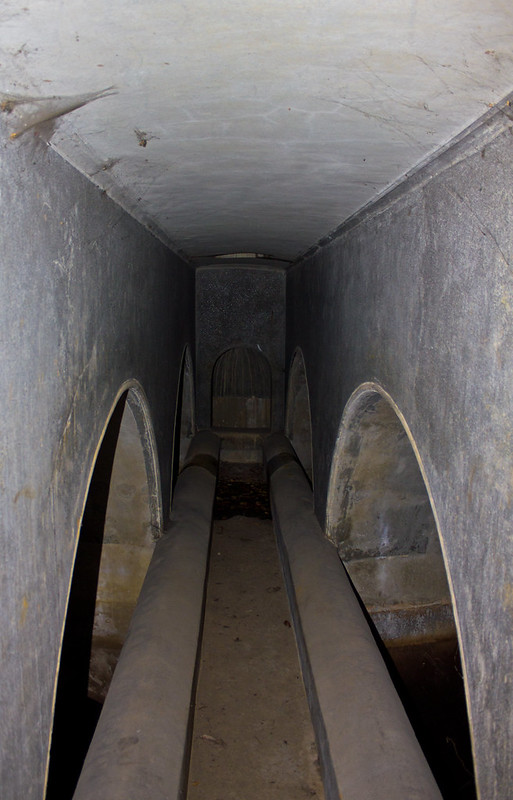
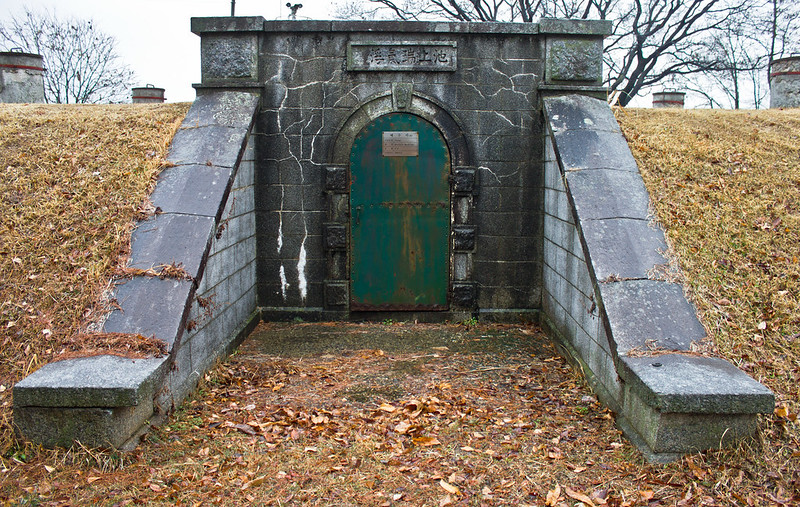


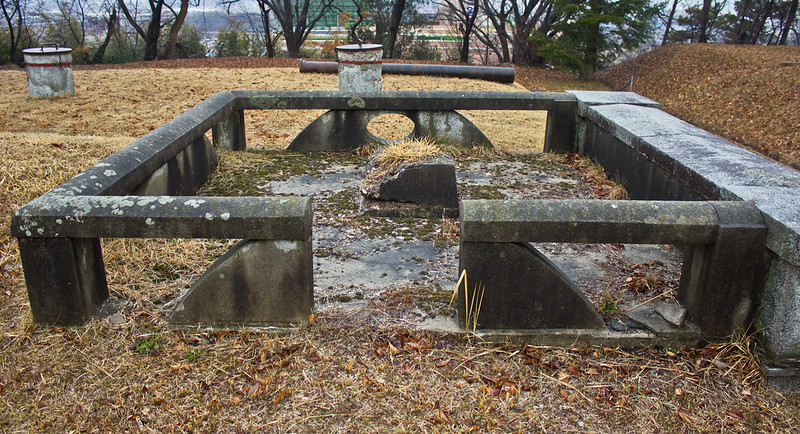
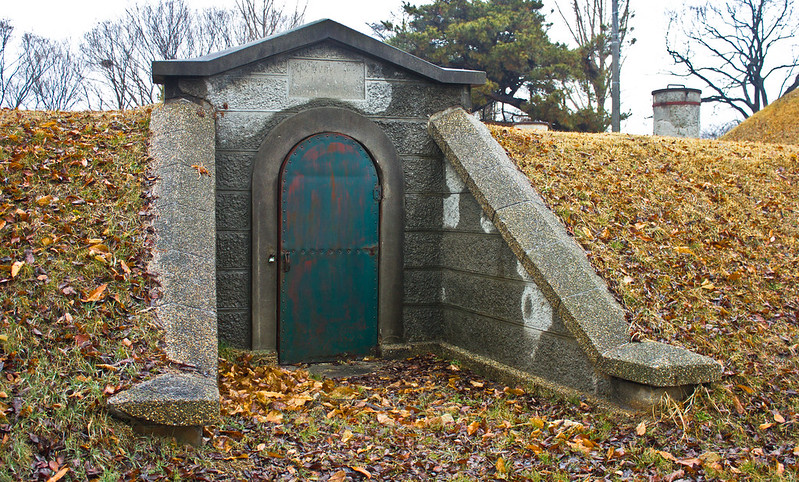

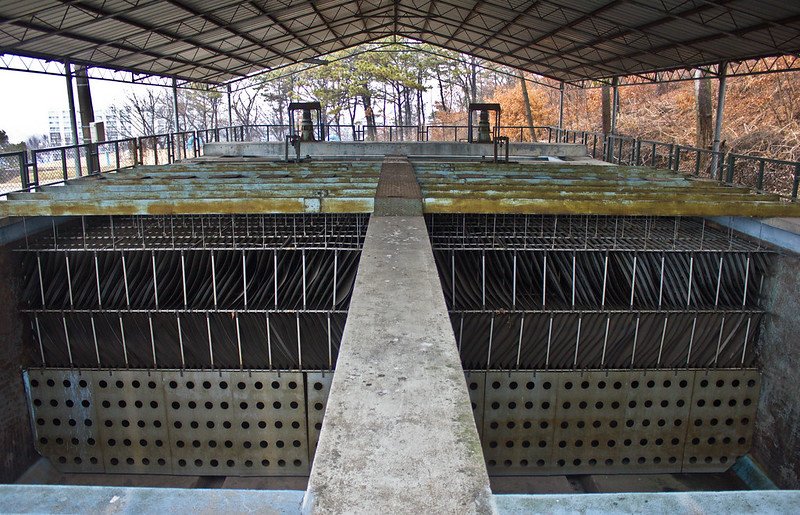
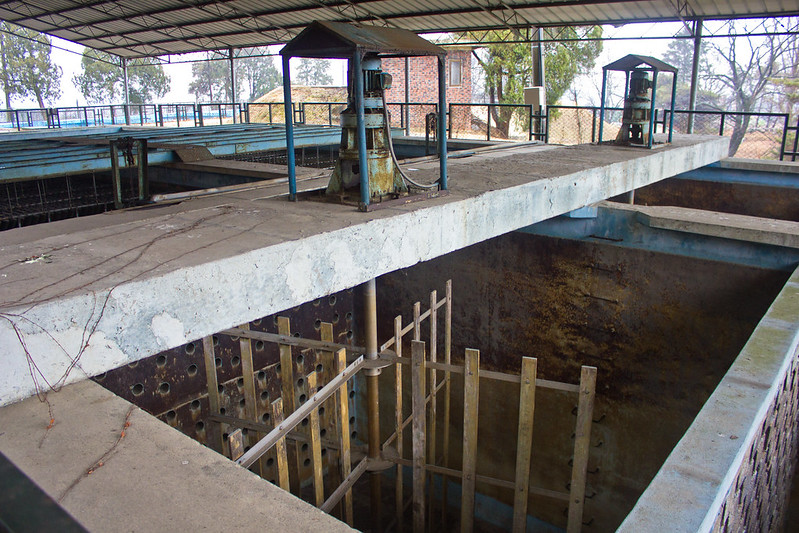
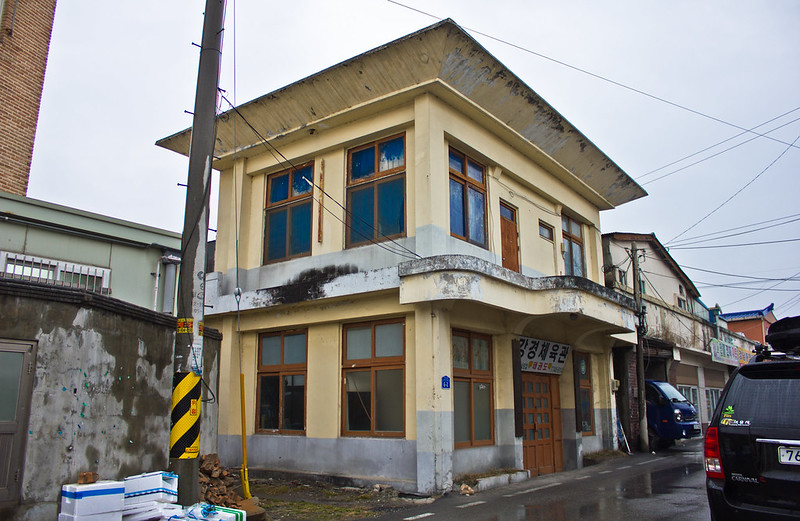
Pingback: Gunsan | Colonial Korea
Pingback: Early Modern Brick and the Perforated Qing Cross – Colonial Korea
Hi there Nate,
First of all, thanks for all the work you have put into this blog. I doubt I would have ever visited Ganggyeong if it hadn’t been for this write-up. I made a trip over there after having visited Iksan and Gunsan last week. A few updates to share regarding some of the sites mentioned… all of the debris around the Old Chinese school has been tidied up, however the sites remains dusty and difficult to access. I went inside and chairs (not sure if they are originals?) have been neatly arranged inside both classrooms. The storehouses at Daeheung-ro 5beon-gil are still standing, and they still seem to have a few years left in them. Ongyebong road has probably seem the most change… most of the original storefronts are undergoing restoration; the only one that has been finished so far is the grey building with the defaced signage (modern sign reads “화신 농약사” in your photo). The lettering has received a fresh coat of paint and the addition to the front entrance has been removed. The addition to the front of the Daedong Electrical Shop has also been removed. Happy to share some photos if you’re interested.
Best,
Jack
LikeLike
Jack, thanks for your kind words and for giving an update. Much appreciated. I’m surprised to hear restoration is going so slowly. I think the plan was brought forward in 2015.
LikeLike
Hi. You were mentioning the former house of the Hanil Bank’s former employee. I believe that was the presidents house. I was actually at that house a few weeks ago. I was brought there by chance by an elderly Korean man. It’s in a state of repair at the moment because it will be turned into a guest house. I toured it extensively and took a lot of pictures. Not much to look at right now but all of the original Japanese interior features are still there. So if you would like to see some pictures I can show you.
LikeLike
Hi Sebastian, sounds great. I’ll shoot you an email. Thank you!
LikeLike